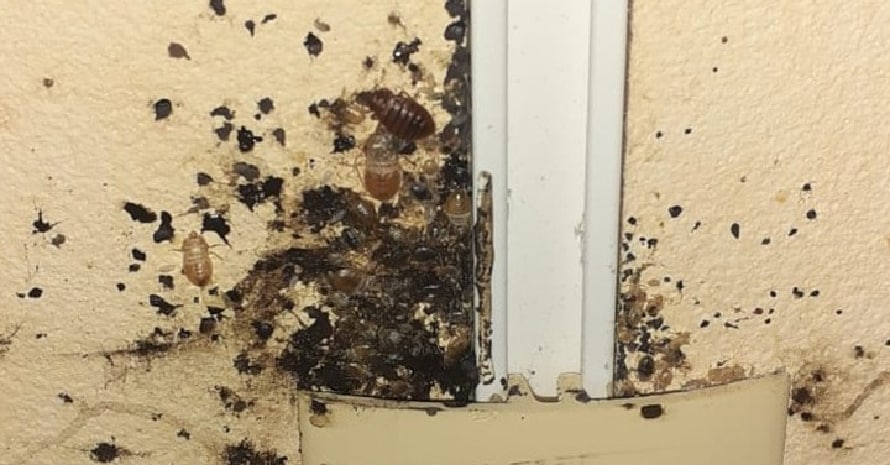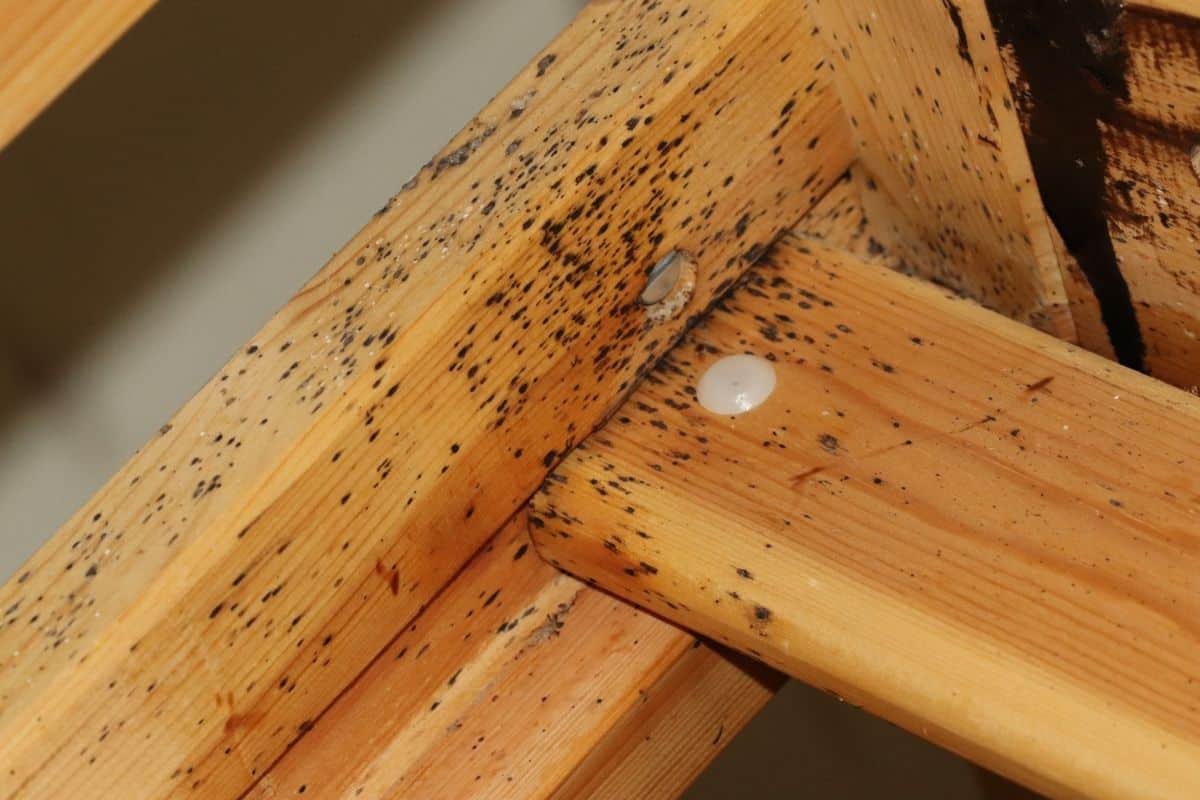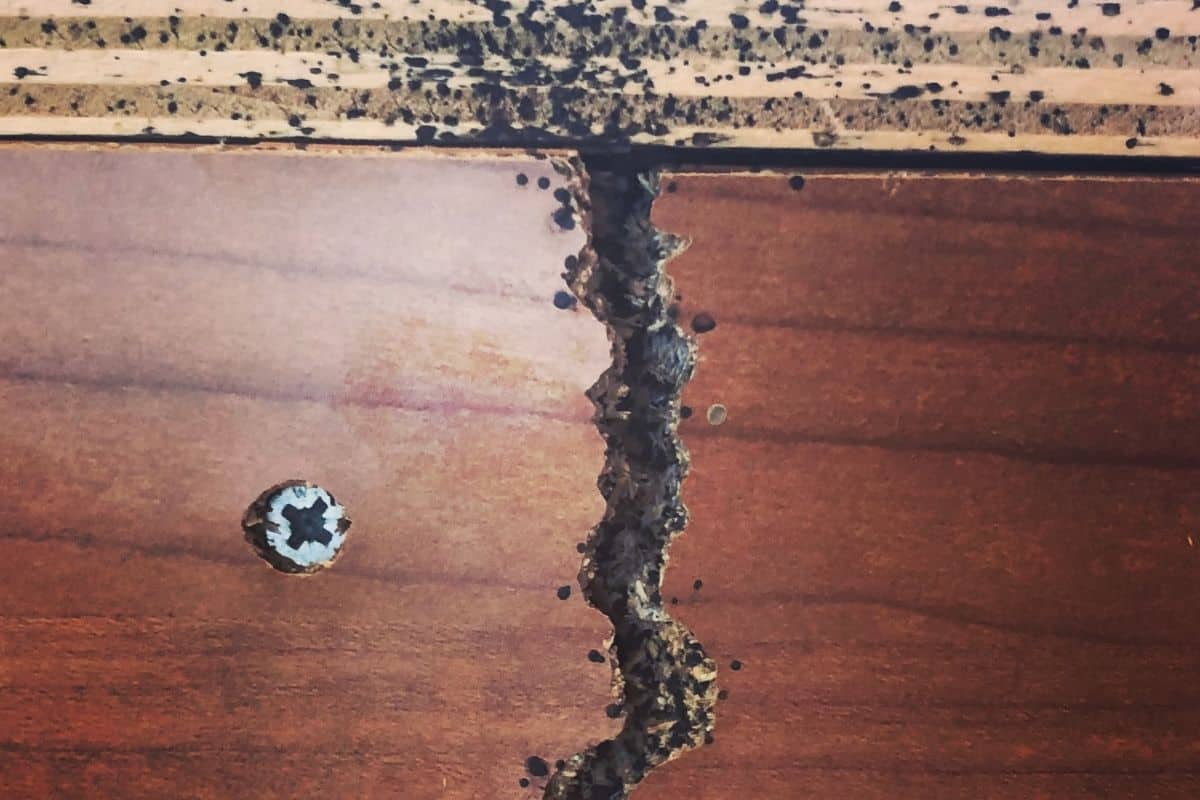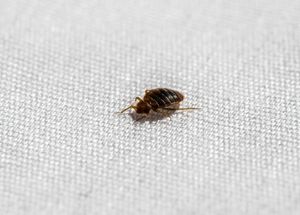When your house is infested with bed bugs, and not only do they hide in your bed and wardrobe, but in the walls as well, how do you treat bed bugs in walls?
Here are the recommendations on how to search and destroy. You will learn how their feces look, how long they can remain in walls, and what a credit card has to do with it.
How Are Your Walls Supposed to Be Finally Bug-Free?
Bed bugs can be found far beyond their namesake furniture. Like many insects, they are natural born (or rather natural hatched) survivalists that live through various conditions, even way more severe.
That is why they can be found in the wall cracks as well as in soft mattresses or pillows. Let’s break down how they live, how you can find them, and how to extinguish them.

Can bed bugs live in walls?
As you’re reading this article and have a reason to suppose so, the truth is yes, they can. Though normally they eat once every five or ten days, they can live without eating for months.
So while you usually expect them where they can access a fresh human body and drill for blood on your skin, they can be found in different places – including walls. Especially where the wall meets the floor or the ceiling.
How to know if you have bed bugs in walls?
Let’s state that this question only makes sense if you know for sure that the insects have entered the building. You may have found them in your bed or in your clothes, but to make sure they don’t hide in your walls, you may want to check them. How does one bed find a bug nest in wall? There are several options:
- Look for real bed bugs on the wall. It’s 100% evidence, but it takes a lot of luck to detect them alive. They travel from 5 to 20 feet away from their usual hiding places that, yes, can be in the walls.
- Look for visible physical signs of bed bugs on walls, like feces or skins. Their eggs also do, but they are almost never seen in plain sight.
- Check whether your skin has irritations when you wake up. These spots usually appear on exposed parts: face, neck, hands, and so on. They may itch but not necessarily. Because of natural anesthetics, few of us can feel the bug bite in real time.
- To be the surest, you can conduct a credit card test. It is based on the fact that the body of an adult bug is about as thick as a regular credit card. Take a card and check the cracks on the wall with it, trying to put it in. If the card fits into the crack, so does a bug. If you are lucky, you may even scare one out of the crack.

Step-by-step guide on how to get rid of bed bugs in the walls
As you have made sure there are bed bugs in your walls, the question is how to get rid of bed bugs in walls – indeed, in your whole household. Don’t forget to check for these bugs in your mattresses, pillows, bed sheets, carpets, and clothes.
If you detect them in your walls, it means they are far beyond that. By the way, have you noticed these irritations on your skin?
There are various methods on how to get bed bugs out of walls. Let’s choose the simplest and the most efficient.
- Locate all the places where the bugs may dwell. Along with walls, it may be your bed, your carpet, your wardrobe. Search by evidence like feces, dry skins, eggs if you see them, or blood stains in your bed.
- Process ALL of these places.
- Hot-wash or steam the clothes where they may dwell
- Specifically for walls, use a bedbug spray or CimeXa dust. Process the cracks in the wall with a duster with a thin rubber tip that can spray the bed bug dust into the cracks. Don’t abuse it, though, and be careful while applying it to electric outlets. You better switch the power off as you do it.
- Leave the room for 5 or 6 hours and close it. The time may depend on the solution you use: the manufacturer may recommend longer or shorter periods.
What else can you use against the bugs? Obviously, using boiling water that surely kills them makes no sense on your walls. Neither does using bleach, alcohol, or vinegar solutions.
But, for example, pyrethrin powder or Diatomaceous Earth to poison them. This is the case when specialized solutions work better than any of these common household liquids.
The manufacturers, though, often recommend using their products with other methods. Make sure the pesticides you use, regardless of the manufacturers, are EPA-registered, and follow the instructions carefully.
This way, you need to do it with all the rooms where you suspect these parasites to appear. In addition, it helps you to get rid of other insects that may live there.
How to prevent further infestations
Eliminating one nest is good, but it’s better to make sure there are no other colonies to appear. To make sure, you can do the following:
- Check everything in your home. Mattresses and carpets, walls and animal places, wardrobes and attics. Apply necessary measures everywhere you find them.
- Get protective covers for your mattresses and box springs, so bugs can neither get in nor get out of there if there remain any.
- Keep your house in order. Clutter marks the spot where these insects may dwell. Let there be fewer of them.
- Keep from using shared laundry services if possible. If not, look at your washed items carefully and use new bags for carrying them home.
- Still, regularly wash and dry your clothes.
- Get a heater chamber for treating your clothes.
- A few days after the campaign, check whether there are others (use an interceptor or check for stains on your bed).
There are also methods that seem to make sense but are inefficient. They include the following:
- Painting the walls. It may work for some time as bugs are deterred by the smell of fresh paint. But as soon as it dries out, the bugs return.
- Freezing the room. Even if you open wide all your windows and turn off the heating in the coldest of winter nights, it may not be cold enough, as it takes 0°F (-17°C) that sustains for about two hours to kill the bugs. This can only work during the Alaskan winter, though we doubt these insects would bother you at all at that time.
If you follow these recommendations, you minimize the chance of reinfestation. And tell your neighbors to do the same if they suffer from these insects too.
Not only will you do them a favor if you instruct them, but also lower the risk of bed bugs migrating from their households to yours.

FAQ on Bed Bugs in Walls
Even after the instruction, there are questions that need to be addressed directly. Here are some of these.
How long can bed bugs live in the walls?
The short answer is: for months, without going out, and for many months if, once in a while, they treat themselves with human blood. But the best answer to “how long do bed bugs live in walls” sounds like “not until tomorrow”. And then the sound of the spray comes.
Should I drill a hole in my wall to treat for bed bugs?
No, as they don’t burrow through walls. They can only use existing cracks and holes. And you can use them for extinguishing the population as well.
Can bed bugs live in electrical outlets?
In theory, they can. Not directly in the socket where they are exposed to electricity, but just behind the plate. There is usually some gap between the plate and the wall, and bugs can get there easily. If you search for them in outlets, start with the one closest to your bed.
Can bed bugs chew through a wall?
We know why you are asking this: because other insects can, like termites or wasps. Bed bugs, though, have a completely different digestion system and mouth structure, so they are unable to burrow. They can only use already existing cracks.
Off the Walls! Conclusion
So, now you know what to do to get rid of bed bugs in the walls. The main conclusion to make is the following: don’t focus on the walls, even though they are there. Extinguish them everywhere! Only then will they leave your wall cracks.
Are there any other methods or pesticides you have used on bedbugs? Any more tips you would add to this? Share them in the comments if you please, and we’ll be grateful!
Also read:


